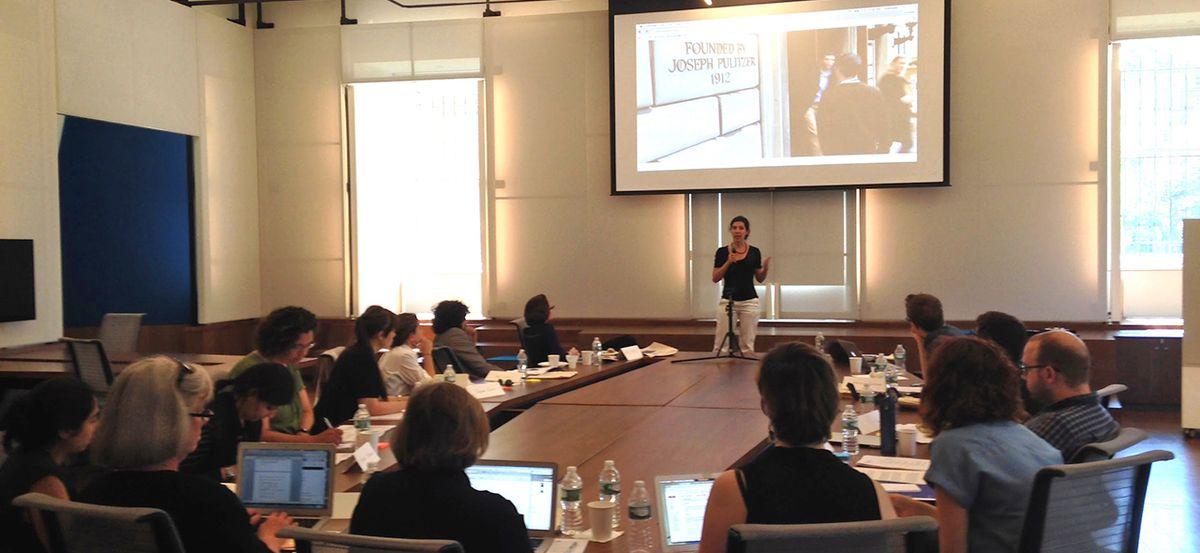PowerPoint presentations are an essential part of our professional lives, and with the advent of advanced features in VBA and Google Slides, creating dynamic and memorable presentations has never been easier. VBA allows for the automation of tasks and the addition of custom functionalities, while Google Slides brings interactive elements and voiceovers to the table, enhancing storytelling and audience engagement. In this article, we explore how to harness these powerful tools to bring your slides to life.
Key Takeaways
- VBA in PowerPoint enables the automation of slide transitions and animations, making presentations more dynamic and reducing the time spent on manual adjustments.
- Interactive features in Google Slides, such as clickable actions, and the addition of voiceovers can significantly boost audience engagement and personalize the storytelling experience.
- Crafting memorable slides is crucial; using striking visuals or succinct statements can leave a lasting impression on your audience, making your presentation unforgettable.
Harnessing the Power of VBA in PowerPoint

Understanding the PowerPoint Object Model
To truly harness the power of VBA in PowerPoint, you must first grasp the PowerPoint Object Model. It's the blueprint that defines how you can interact with the application programmatically. The Object Model is a hierarchical structure of classes and interfaces, encompassing everything from the application itself to the individual shapes on a slide.
By mastering the Object Model, you unlock the ability to automate complex tasks, create responsive presentations, and integrate data dynamically.
Familiarize yourself with the key components of the hierarchy:
- Application: The gateway to all PowerPoint functionality.
- Presentation: The container for all your slides and content.
- Slide: Represents a single slide within the presentation.
- Shape: Any item on a slide, such as text boxes, images, or charts.
Understanding this hierarchy is crucial because you must navigate through these layers in a specific order to manipulate your presentation elements effectively. Start at the Application level and work your way down to the specific Shape you wish to control.
Automating Slide Transitions and Animations
With VBA, you can automate slide transitions and animations to create dynamic presentations that captivate your audience from start to finish. This not only saves time but also ensures consistency across your entire slide deck.
By automating these elements, you eliminate the risk of human error and forgetfulness that can disrupt the flow of your presentation.
Here are some ways VBA can help you automate these features:
- Create a custom slide show that tailors to your specific needs, including slide order and applied animations.
- Set up timing for slide transitions to maintain a smooth flow, which is especially beneficial for presentations with numerous slides.
Remember, PowerPoint will reset animations on arriving at a slide, but only if you've set the slide to transition automatically, with no delay. This feature is particularly useful when you want to PowerPoint reset animation and jump to another slide using VBA.
Using VBA to Control Multimedia Elements
With VBA, you're not just limited to static slides; you can take control of multimedia elements to make your presentations truly dynamic. Imagine synchronizing a video with your speech or having background music that responds to slide changes. Here's how you can enhance your presentation with multimedia control:
- Customize Playback: Adjust the timing, volume, and synchronization of audio and video files to match your presentation flow.
- Interactive Elements: Add buttons or hyperlinks that trigger media playback or animations, making your slides more engaging.
- Navigation Tools: Build tools that allow you or your audience to control the multimedia experience during the presentation.
By mastering these techniques, you'll ensure that your multimedia elements complement your message rather than distract from it.
Remember, the goal is to craft compelling presentations with engaging narratives and visual appeal. Start strong, use technology wisely, and tailor to your audience for a lasting impact.
Elevating Presentations with Google Slides Features

Interactive Elements: Engaging Your Audience with Clickable Actions
To truly captivate your audience, transform your slides into an interactive experience. By embedding clickable actions on images or buttons, you create a dynamic environment that responds to your audience's input. This level of engagement ensures that your message isn't just seen; it's actively explored.
Encourage participation by incorporating interactive quizzes, polls, or surveys. These elements not only maintain attention but also provide immediate feedback on your audience's preferences and opinions.
Here are some ways to involve your audience:
- Pose questions to stimulate thought and discussion.
- Use activities that require audience input.
- Integrate interactive visuals to illustrate complex ideas.
- Create a powerful call to action that drives change.
Remember, the goal is to foster an environment where your audience is not just listening, but participating. Tailor your approach to their interests and preferences for maximum engagement.
Voiceovers: Adding a Personal Touch to Your Storytelling
Voiceovers are not just a stylistic choice—they're a strategic tool that can transform your slides into a compelling narrative. By adding your voice to the presentation, you guide your audience through the content, creating a more personal and engaging experience, especially in remote settings.
Adding a voiceover means your slides are never silent; they speak directly to your audience, providing clarity and context.
Here are some practical tips for incorporating voiceovers in your Google Slides:
- Ensure your recording is clear and free of background noise.
- Practice your script to maintain a natural and conversational tone.
- Use editing tools to fine-tune your voiceover and align it with your slides.
Voiceovers are not only about engagement; they also play a crucial role in making your content accessible. For individuals with visual impairments, your spoken words can paint the picture that your visuals alone cannot convey. In the realm of remote work and education, voiceovers serve as a bridge, connecting you to your team or students with a clarity that written words might lack.
Memorability Magic: Crafting Unforgettable Slides
To leave a lasting impression, your slides must transcend the ordinary. Aim for memorability through a striking image or a succinctly phrased statement. This is your chance to demonstrate understanding, grab attention, and lay the foundation for a compelling narrative.
By focusing on simplicity and clarity, you can ensure your message not only sticks but also motivates your audience to take the next step.
Consider the following must-haves for a Go-to-Market slide that resonates with investors on a profound level:
- Visual Impact: Use visuals to amplify the impact of your strategy.
- Color Palette Mastery: Choose a color scheme that aligns with your brand.
- Typography Magic: Select legible fonts and maintain consistency.
- Embrace Whitespace: Use whitespace strategically for a balanced composition.
- Hierarchy and Flow: Organize information logically to guide the viewer's gaze.
Remember, the art of presentation is a mix of powerful delivery and a clear message. Enhance presentations with interactive elements and visuals. Seek feedback for storytelling improvement. Transform data into captivating narratives for memorable presentations.
Conclusion
In conclusion, the dynamic presentation techniques discussed in this article, from interactive elements to VBA automation, are powerful tools to transform your slides from static displays into captivating experiences. By incorporating voiceovers, automating transitions, and responding to audience actions, you can create presentations that not only inform but also engage and leave a lasting impression. Remember, the goal is to make each slide memorable and to ensure that your message resonates with your audience long after the presentation has ended. Embrace these techniques to elevate your storytelling and deliver presentations that truly come to life.
Frequently Asked Questions
How can VBA in PowerPoint enhance my presentations?
By using VBA (Visual Basic for Applications), you can automate tasks and create custom functionalities in PowerPoint, such as dynamic slide transitions, animations, and control over multimedia elements. This allows for more engaging and interactive presentations that captivate your audience and leave a lasting impression.
What are some interactive elements I can use in Google Slides to engage my audience?
Google Slides allows you to incorporate interactive elements like clickable actions on an image or button. These elements can create a more engaging and responsive experience for your audience, making your presentations more memorable and effective.
What is the importance of memorability in presentations?
Memorability ensures that your presentation makes a lasting impact on your audience. It's about creating slides that are as unforgettable as a powerful scene in a film, using striking visuals or succinct statements that resonate with the viewers and stick in their minds long after the presentation has concluded.
